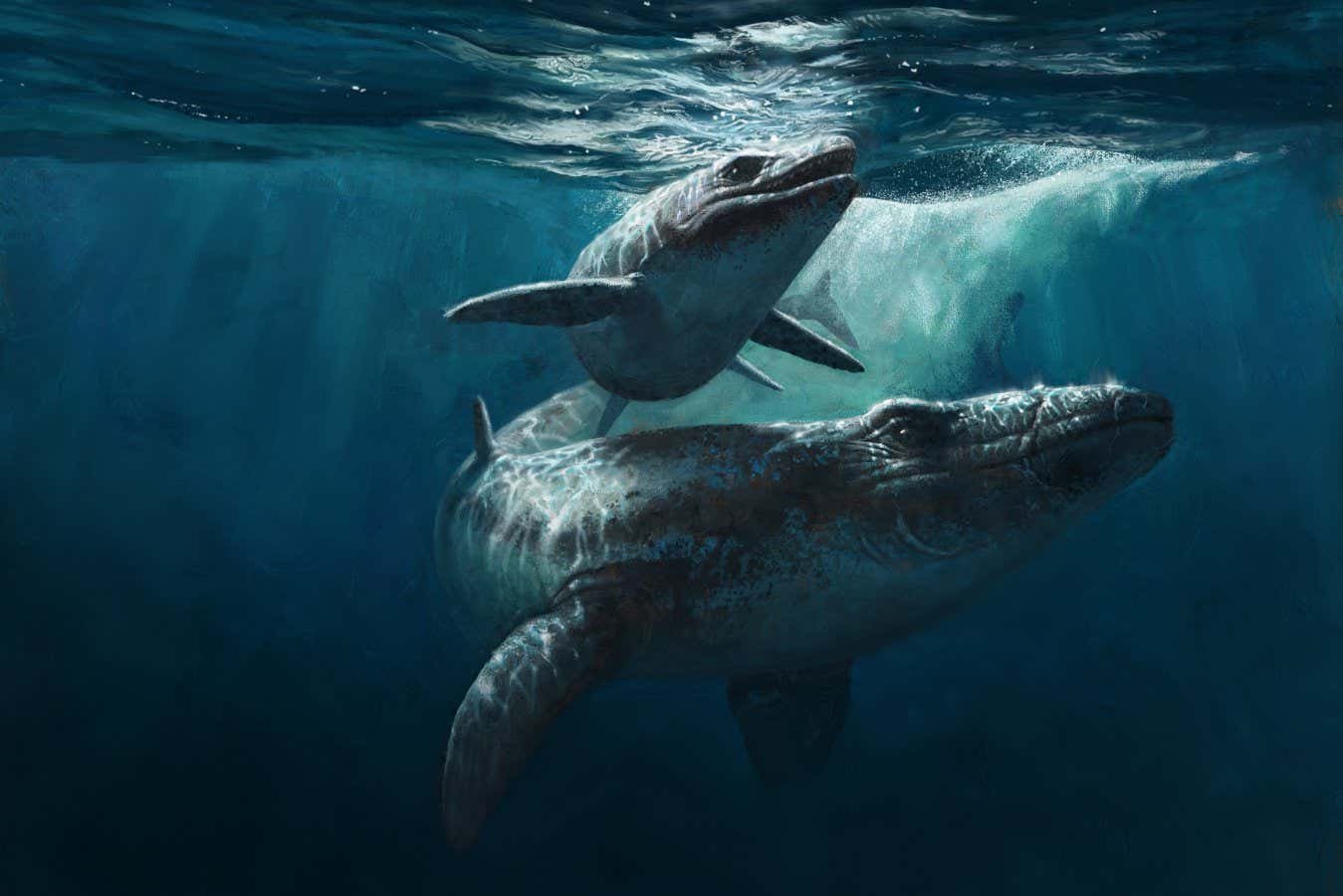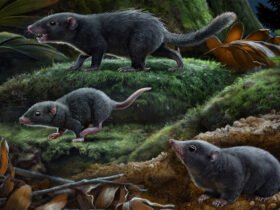
Artist’s impression of Carinodens, a mosasaur whose remains scientists suspect might have been manipulated and then labelled as a new species
Henry Sharpe
Remnants of a bizarre “shark-toothed” aquatic predator that lived alongside dinosaurs were probably forged, according to new research.
The contentious fossil of a jaw fragment was apparently collected by miners working at the Sidi Chennane phosphate mines in Morocco, in rock that is 66 to 72 million years old. Nick Longrich at the University of Bath, UK, and his colleagues analysed the find and classified it as a new species of mosasaur named Xenodens calminechari in 2021.
The fossil possesses highly unusual blade-like teeth similar to those of sharks, which Longrich and his colleagues suggested would help carve up large prey.
Morocco is uniquely rich in mosasaur fossils, says Henry Sharpe at the University of Alberta in Canada. “Miners working in the phosphate mines come across mosasaurs all the time.”
The problem is many people in Morocco make a living selling fossils, says Sharpe. “So many of the mosasaur fossils being sold from Morocco are modified [there] – teeth are added, bones are sculpted, all to make the fossil worth more to sell.”
Sharpe and his colleagues have now reassessed the evidence published by Longrich’s team. The biggest indication that the fossil is forged are the teeth, says Sharpe. Each mosasaur tooth corresponds to a pit in the jaw. “Even if the fossil is very poor quality, you can still count the correct number of teeth by counting the number of these pits,” he says. But X. calminechari has four teeth over two pits.
The teeth also appear to be glued onto the jaw in ways that don’t align with the pits, says Sharpe. “The tooth implantation looks likely to be faked.”
There are ways to determine whether a fossil was forged, says Sharpe. Typically, forgeries are sculpted using a mixture of bone fragments and glue, and then embedded in a mixture of glue and sand that looks like natural rock. CT scans allow you to see into the underlying bones and rock to determine whether they were modified.
“CT scanning fossils is common, and really should be standard for mosasaurs coming from Morocco,” says Sharpe.
Rather than a new species, Sharpe’s team suspects the fossil represents a known, albeit manipulated, mosasaur. Its teeth are similar to those of juvenile mosasaurs named Carinodens and Globidens, says Sharpe.
“I applaud the authors of this paper,” says Valentina Rossi at University College Cork in Ireland. “To address this [forgery] problem, we must keep talking about it [and] report fossils that have been prepared in ways that are misleading.”
There can be many reasons to produce forged fossils, but it mostly boils down to money, says Rossi. “A broken fossil bone will not sell, but a complete piece, like a jaw bone full of well-preserved teeth, will likely sell well,” she says.
Countries like Canada largely prohibit private fossil sales, says Sharpe. Without such regulations, there may be a temptation to tweak fossils to fetch high prices.
Longrich was approached for a comment on this story, but didn’t reply. Sharpe hopes Longrich’s team will CT scan the fossil and publish the results. “Scientific consensus isn’t reached by agreement; it’s reached by disagreement until both sides gather enough data to answer the question,” he says.
Topics:













Leave a Reply